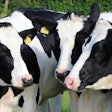Successful incubation in hot, humid climates poses a number of challenges for the hatchery, one of which is achieving sufficient weight loss at transfer to deliver high hatchability and optimal chick quality. Here, Gerd de Lange of Pas Reform Academy provides solutions to these challenges.
"Take for example a moderately hot and humid climate of 30°C with 75%RH. With these properties, air at sea level contains approx. 20g H2O/kg air," says Lange, senior poultry specialist. “If we assume a setter climate of 37.5°C and, with the aim of achieving optimal weight loss from fresh egg weight at transfer of 12%, we choose a set point of 50% RH, the air in the setter will contain approx. 21g H2O/kg.”
If the setter’s air valves are closed, evaporating water from the eggs will increase both the absolute (gH2O/kg air) and relative (RH%) humidity of air in the setter. This limits evaporation from the eggs, making it impossible to achieve 12% weight loss.
By ventilating the incubator with fresh air, evaporating water from the eggs can leave the incubator via the outlet, while maintaining an optimal incubation climate. “However, if we stay with the above example, each kilogram of air entering the incubator can extract only 21g – 20g = 1 gram of water,” says Lange. “This means that a lot of ventilation, starting early in incubation, is needed to allow the hatching eggs to lose sufficient weight.”
Adopting a non-linear weight loss profile that starts incubation with high RH% (by sealing the setter for several days), then compensating for low weight loss by applying a low RH% (ie. less than 45%) during the second half of incubation, is not feasible in hot, humid conditions. Such low levels of RH% can simply not be achieved, even when air valves are 100% open. This is because when RH% set point inside the setter is, for example, 45%RH, the inlet air (30°C / 75%RH=20g H2O/kg) already contains more water (37.5 °C/ 45 %RH = approx. 18g H20/kg.). In this scenario, a linear weight loss profile based on a constant RH% of approx. 50% is much easier to achieve.
It is possible, at least partially, to overcome these challenges and minimize the need for high ventilation rates early in incubation, by optimizing the temperature and relative humidity of inlet air using an Air Handling Unit. Outside air of 30°C / 75%RH can be climatized to, for example, 25°C / 60%RH, which significantly reduces the water content of the air from 20g H2O/kg to approx. 12g H2O/kg. Again using the above example, each kilogram of air entering the incubator now has the capacity to extract 21 – 12 = 9 gram of water.
There is a downside to treating hot, humid outside air in this way. It requires energy, both for the cooling needed for dehumidification and also to subsequently re-heat the air to a recommended inlet temperature of 25°C (+/- 2 °C). This energy cost will increase the cost price of the day-old-chick – but it does give the hatchery manager an additional tool with which to better control hatchability and chick quality in a challenging, hot and humid climate.
Advice
- Aim for a linear rather than a non-linear weight loss profile in hot, humid climates, to prevent insufficient weight loss that will inevitably arise from failing to achieve the low %RH set points required during the last days of incubation using a NLWL-profile.
- Pre-condition hot, humid outside air to the inlet specifications recommended by your incubator supplier, to reduce its moisture content.
- Perform a cost-benefit analysis within these specifications, to establish the most advantageous combination of temperature, relative humidity and energy usage to achieve the highest hatchability and optimum chick quality.


















